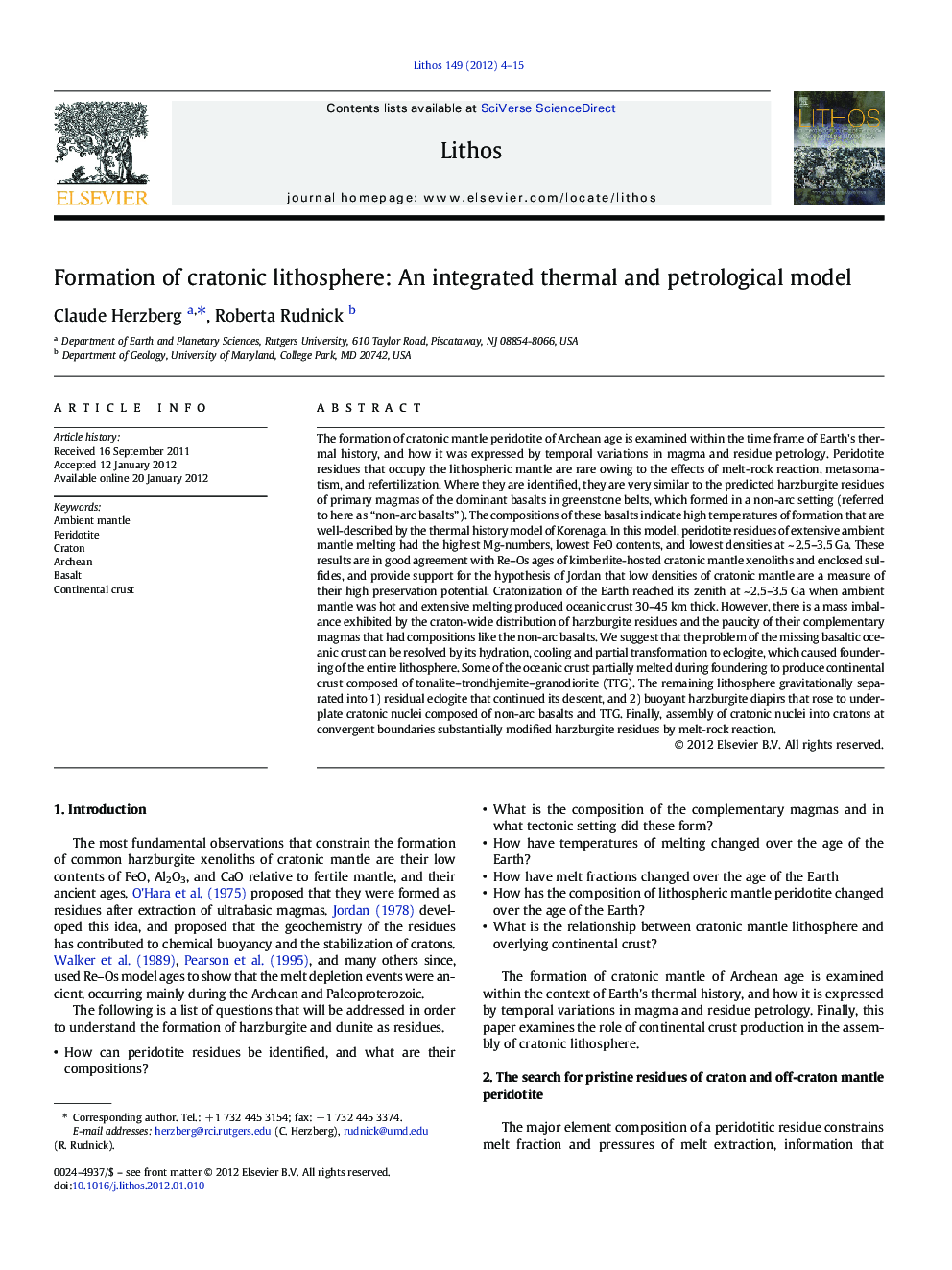| کد مقاله | کد نشریه | سال انتشار | مقاله انگلیسی | نسخه تمام متن |
|---|---|---|---|---|
| 4716574 | 1638704 | 2012 | 12 صفحه PDF | دانلود رایگان |

The formation of cratonic mantle peridotite of Archean age is examined within the time frame of Earth's thermal history, and how it was expressed by temporal variations in magma and residue petrology. Peridotite residues that occupy the lithospheric mantle are rare owing to the effects of melt-rock reaction, metasomatism, and refertilization. Where they are identified, they are very similar to the predicted harzburgite residues of primary magmas of the dominant basalts in greenstone belts, which formed in a non-arc setting (referred to here as “non-arc basalts”). The compositions of these basalts indicate high temperatures of formation that are well-described by the thermal history model of Korenaga. In this model, peridotite residues of extensive ambient mantle melting had the highest Mg-numbers, lowest FeO contents, and lowest densities at ~ 2.5–3.5 Ga. These results are in good agreement with Re–Os ages of kimberlite-hosted cratonic mantle xenoliths and enclosed sulfides, and provide support for the hypothesis of Jordan that low densities of cratonic mantle are a measure of their high preservation potential. Cratonization of the Earth reached its zenith at ~ 2.5–3.5 Ga when ambient mantle was hot and extensive melting produced oceanic crust 30–45 km thick. However, there is a mass imbalance exhibited by the craton-wide distribution of harzburgite residues and the paucity of their complementary magmas that had compositions like the non-arc basalts. We suggest that the problem of the missing basaltic oceanic crust can be resolved by its hydration, cooling and partial transformation to eclogite, which caused foundering of the entire lithosphere. Some of the oceanic crust partially melted during foundering to produce continental crust composed of tonalite–trondhjemite–granodiorite (TTG). The remaining lithosphere gravitationally separated into 1) residual eclogite that continued its descent, and 2) buoyant harzburgite diapirs that rose to underplate cratonic nuclei composed of non-arc basalts and TTG. Finally, assembly of cratonic nuclei into cratons at convergent boundaries substantially modified harzburgite residues by melt-rock reaction.
► Cratonic mantle formed as residues of melting ambient mantle in ocean-ridge type settings.
► Cratonic mantle residues have minimum densities at ~ 2.5-3.5 Ga and formed when Earth was hottest.
► Complementary oceanic crust was global and 30-45 km thick.
► Remnants of oceanic crust are identified as basalts in Archean greenstone belts.
► Some oceanic crust partially melted to produce continental crust and the rest foundered as eclogite.
Journal: Lithos - Volume 149, 15 September 2012, Pages 4–15